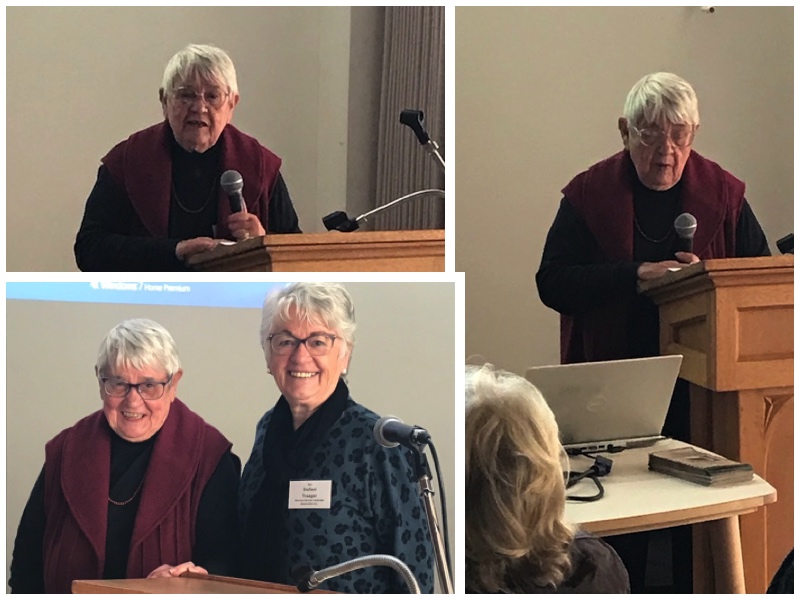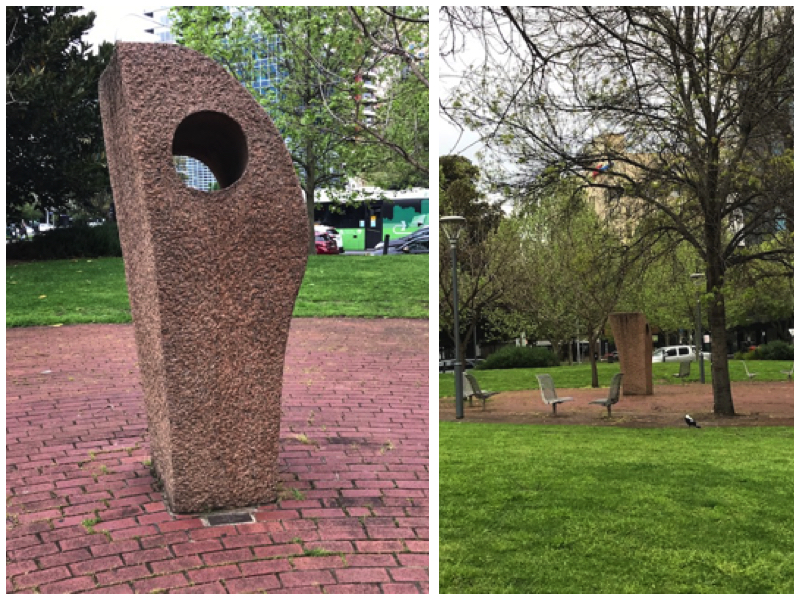by John Clarke
There can be few people who have made a more significant contribution to the cultural life of the Barossa Valley. At the last meeting of the German speaking group Kaffee und Kuchen the guest speaker was Gerlinde Trappe.

Gerlinde introduced her talk by saying that she had three babies. The first was her son Harold, now an architect in Melbourne. The second was the Barossa Sculpture Park.
By the time Gerlinde and Paul Trappe emigrated from Germany and made their home in Tanunda in 1964 Paul already had an established reputation as a sculptor. Over the next twenty years he produced work that is on display in Australia, Germany and the United States. His Tanunda Fountain is a prominent feature of the town’s Keil Gardens.
Paul’s commissions meant frequent trips and lengthy stays overseas, and on one such trip to Germany they had seen a street of sculptures. They returned with the idea of an area in the Barossa that would be devoted to sculpture, a tourist destination for art lovers and even those simply curious about modern art. They put their idea to the Barossa Council, and with support from the Barossa Arts Council planning for an International Sculpture Symposium began. Paul had the connections, and Gerlinde had the determination and the persuasive letter writing skills to find sponsors as well as artists, and in 1988 the symposium took place.
Nine artists – five from Australia, two from the United States and one each from France and Japan – arrived to spend six weeks in the Barossa, working to produce sculptures in local marble and granite on a site below the Mengler’s Hill lookout that had been set aside by the Barossa Council. They were billeted throughout the Barossa, and lunch was provided during a brief break from work on the hill. Local residents and tourists flocked to watch the artists at work. The six weeks culminated with a festival of dancing, music and wine.
So successful was the event and so impressive the sculptures that a second symposium was held twenty years later with sculptors coming from the United Kingdom, United States, France, Japan, Belgium, Egypt and Australia. The Barossa Sculpture Park has exceeded the early expectations of Paul and Gerlinde. It is their gift to the Barossa.
Gerlinde’s third baby was the Barossa Regional Gallery. She saw the necessity for a designated arts building, where art in all its forms could be displayed to advantage and where artists could meet and hold workshops. Again the Barossa Council was approached, and the Tanunda Soldiers Memorial Hall was chosen as the most appropriate site. While a grant was obtained from the State government, more money was required. Among other events a progressive dinner was organized, and a more expensive dinner with a wine auction to attract wealthy donors. The Regional Gallery is today a vibrant hub for the visual arts and, since the acquisition of the Hill & Son pipe organ from the Adelaide Town Hall, for music too.
The true gift to the Barossa has been Gerlinde Trappe.
The next Kaffee und Kuchen meeting will be held at the Langmeil Centre, 7 Maria Street, Tanunda on Monday, 31 October at 1 pm.

